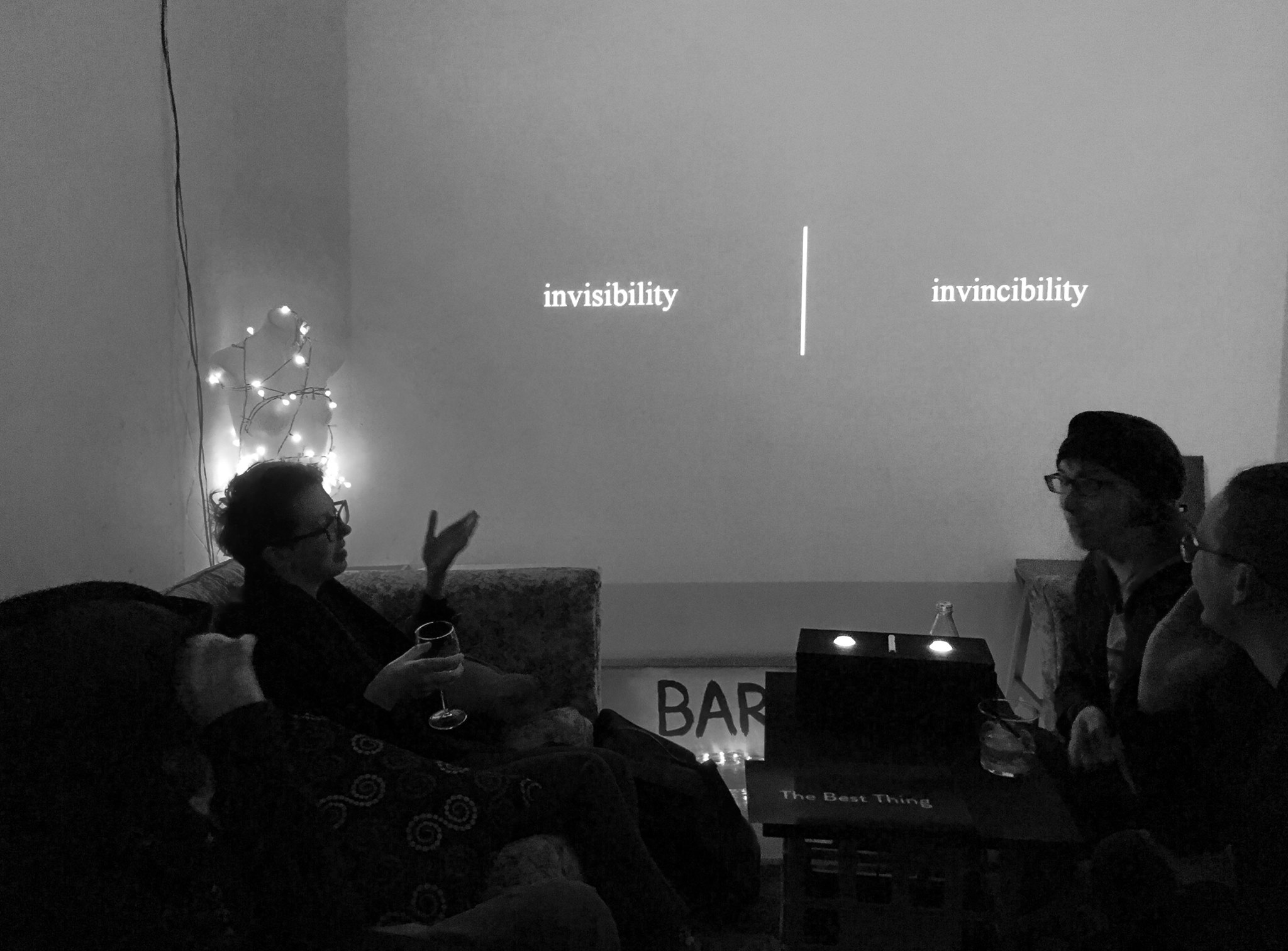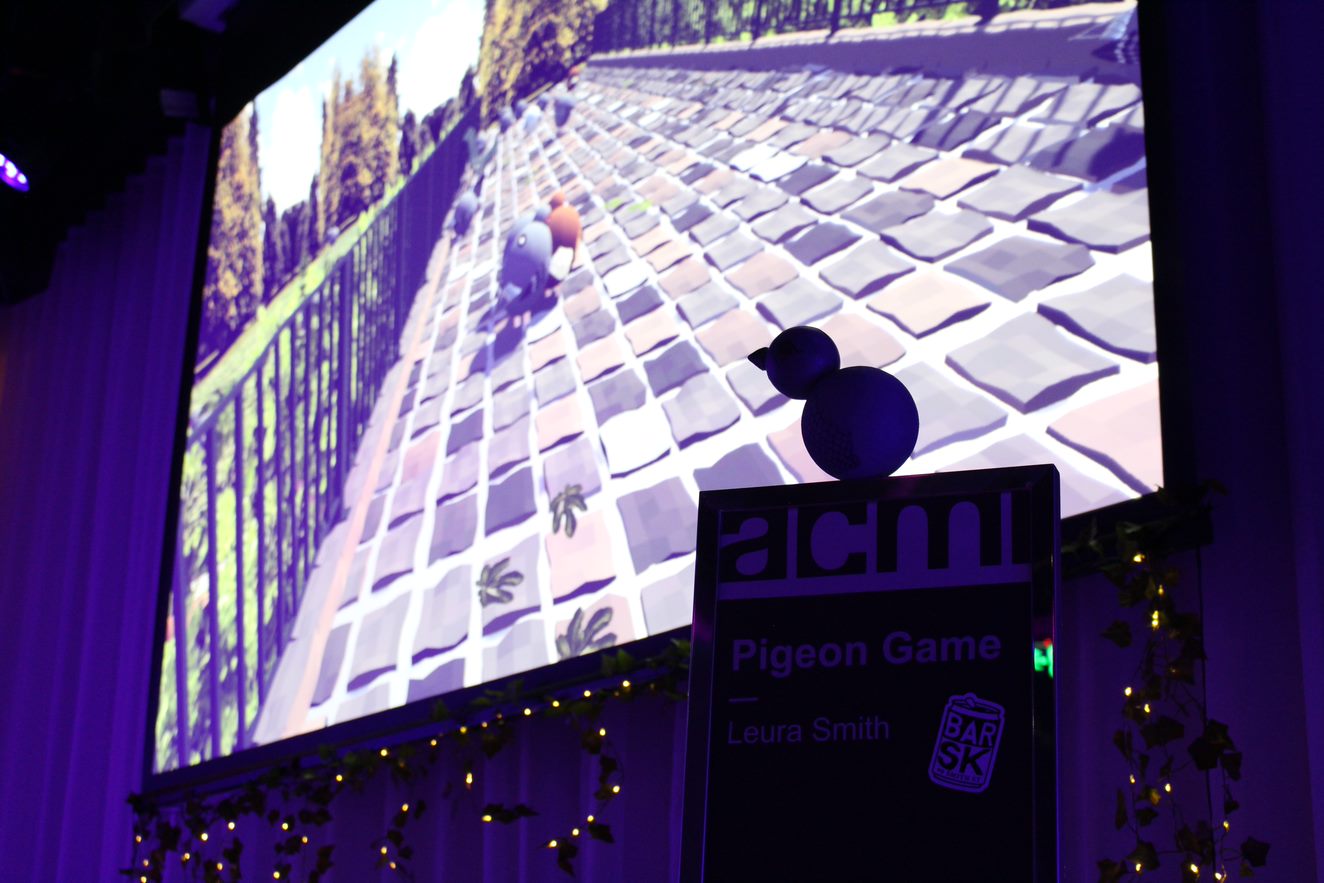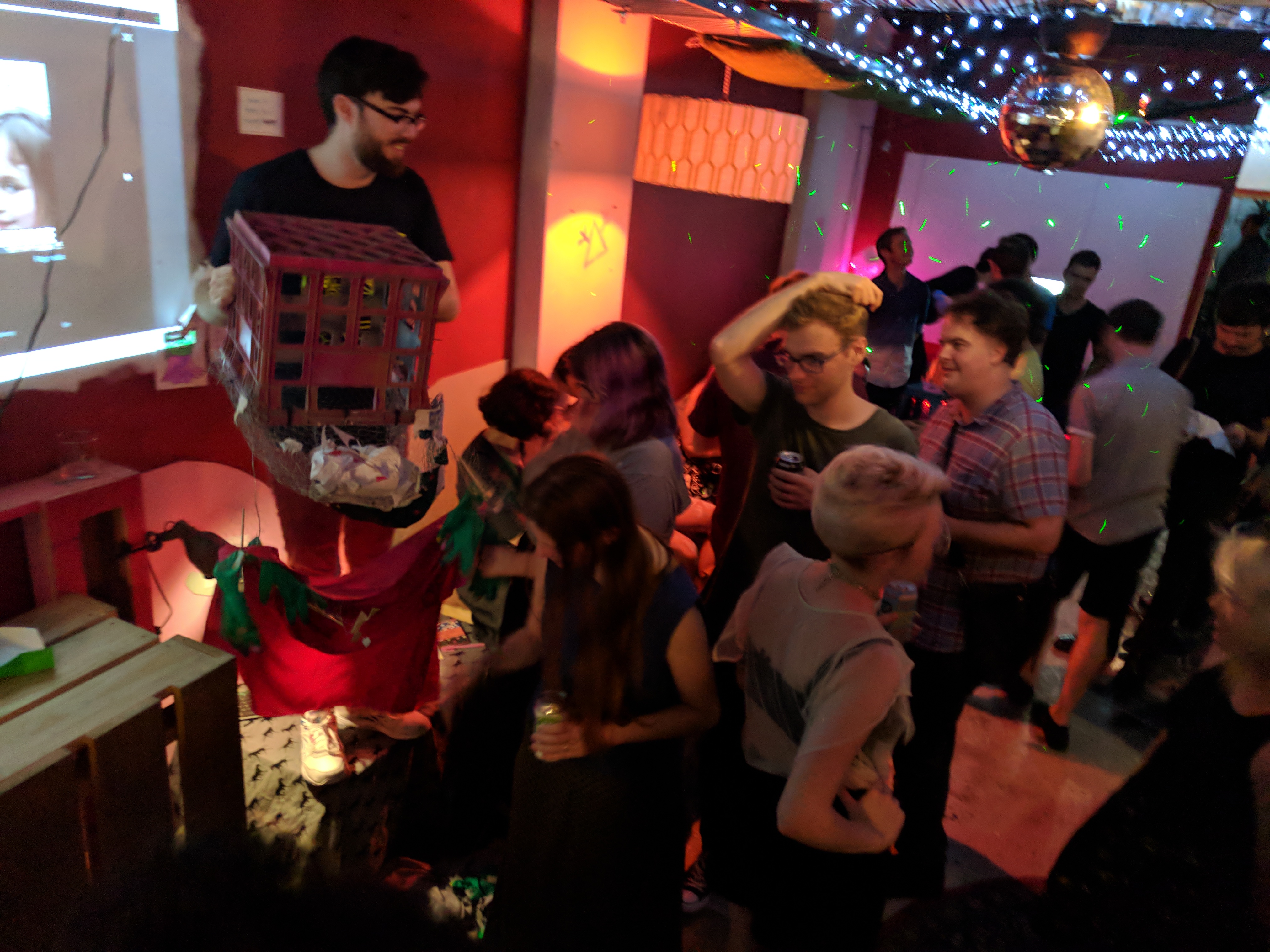Exhibitions don't need to be in a gallery, they don't even need to be considered, just do it!
Unless you want it to be good, in which case try this approach.
1.
Format
 Venue.
Venue. Think of the space as a buffalo and use every part of it. Taking each nook and cranny into account now will help the entire process. Also worth noting features such as power and internet access.
Timeframe. A single night exhibition can be a lot more precarious than a month long showcase. Note the opening hours and any events during the exhibition such as opening nights or talks.
Reason. Think about the driver behind the exhibition. What do the stakeholders want to see, and if they don’t have a solid idea, create one. Give achievable expectations to measure later.
Contributors. Look for local, diverse voices and include them in the process. Whether it’s the exhibited pieces, the set dressing or just advice, a local voice will resonate in immeasurable ways.
Top
2.
Layout
 Capacity.
Capacity. Avoid overcrowding the space with games, 1 work per 20 person capacity is a good rule of thumb.
Imagine. Walk through the space and imagine your view. Draw the audience around the space with points of interest, keeping in mind a crowd may block line of sight for low-level features.
Flow. Refine the flow, keeping in mind thoroughfares, bathrooms, bars, exits and entrances. Where does that flow take the audience, and where does it avoid.
Public/private. Areas away from the flow are good for private areas. These areas are good for showing more intimate works, and can be enhanced with low ceilings, soft furnishings and lower music/ambient volume.
Space. Keep spaces for people to exist and relax without being in the way, both private and pubic. A space to sit and chat in view of the works will naturally draw conversation about the exhibition, which is always encouraged.
Top
3.
The Offering
 The Iron Chef Approach.
The Iron Chef Approach. Consider the works to be a meal constructed around a theme ingredient. The audience are tasters, and should enjoy the experience as a whole, and definitely not overfed with these …dishes.
Appetisers. Presents the theme in short, simple morsels. Good for thoroughfares and transition spaces. Variations on the theme.
Main course. Engage multiple players in a bigger, repeatable experience. Should carry the theme most obviously.
Dessert. Shows the theme in an unusual way and only works in the context of the exhibition. Often short with an obvious punchline.
Showstopper. Good integration with custom hardware. Looks good in promotional material, with opportunities for attendees to take and share photos.
Top
4.
Hardware
 Palette.
Palette. Considering the theme, the space and the works, come up with a palette of materials and items.
Display. Choose display types for each work. Projectors integrate into spaces nicely while screens are good for building around. Displays can also be oriented any way in 3D space, leading the viewer to wherever they’re pointing, which can be a great way to get the audience using an out-of-the-way space.
Texture. Some materials or items just need to be touched. A piece of fur or a brightly lit button will draw a curious person across a room just to touch it.
Rewards. Interactions should be rewarded if possible. Some interactions are their own rewards, like textures, but buttons, levers and other mechanical objects should be linked to feedback systems.
Kid-proof. Any hardware needs to withstand a drunken adult, or worse, a child. It should be sturdy, safe, and able to withstand food and drink.
Wiring. Consider the cables and connections for each component. They don’t need to be concealed, they can be a feature with the right forethought.
Portable. Definitely keep in mind the transport and set up of the hardware. Create modular hardware and consider using common materials such as milk crates to add structure, as they can also be used for transporting smaller items and set dressing.
Top
5.
Set Dressing
 Theme.
Theme. Use the theme and material palette from the hardware to flesh out the immersion of the experience.
Digital inspiration. Some works contain items that can be brought into the real world with a little creative thinking.
Extrasensory. While lighting is incredibly important, other senses can be influenced less obviously with fans and heaters or scent diffusers. This can tie into any drinks or foods available.
Playful. If a set piece can’t withstand touching, move it or protect it, or consider changing it. The more the audience is permitted to touch and play with the set dressing the more they will feel immersed in the space, leading to a much stronger reaction.
Breakable. Some pieces may break or be lost, which isn’t always a bad thing. Seeing the impact that the audience has will also strengthen their bond to the environment.
The ‘gram. Always keep in mind the photo opportunities. A good space will result in the audience wanting to document it, so let them, and create invisible ways to collate that media after the fact. Please don’t rely on an overly complicated hashtag.
Top
6.
Execution
 Wireless keyboards.
Wireless keyboards. Using a wireless keyboard (with trackpad ideally) is a great way to fix issues during an exhibition. Don’t forget to label them and store them either with the work or in a secure spot.
Support staff. If there are staff around, teach them about the works and the hardware. Get them involved and excited, they are vital to a good exhibition.
Together. For works that engage multiple people, encourage new connections. Some multiplayer games may have controls that are accessed from different directions, or inputs set into different tables across a seating area, for example.
Feedback. Observe the audience and their interactions, taking notes and photos where appropriate. Collate this with discussions with both the audience and the other facilitators.
Plan B. If some works are more experimental, keep an idea of how to pivot if the audience doesn’t react as planned. This may involve changing inputs, changing image/sound options, or even replacing a work entirely if appropriate.
Photos. If possible, organise an event photographer. They will do better than your phone, trust me, and it’s one less thing to worry about.
Enjoy. If it’s all working, take some time to chill.
Document. Set a time to document after the fact. Organise all the materials, documentation and photos into a folder for archiving and fill in any gaps while it’s fresh.
Top
Appendix.
Examples
 Venue. Think of the space as a buffalo and use every part of it. Taking each nook and cranny into account now will help the entire process. Also worth noting features such as power and internet access.
Venue. Think of the space as a buffalo and use every part of it. Taking each nook and cranny into account now will help the entire process. Also worth noting features such as power and internet access. Capacity. Avoid overcrowding the space with games, 1 work per 20 person capacity is a good rule of thumb.
Capacity. Avoid overcrowding the space with games, 1 work per 20 person capacity is a good rule of thumb.  The Iron Chef Approach. Consider the works to be a meal constructed around a theme ingredient. The audience are tasters, and should enjoy the experience as a whole, and definitely not overfed with these …dishes.
The Iron Chef Approach. Consider the works to be a meal constructed around a theme ingredient. The audience are tasters, and should enjoy the experience as a whole, and definitely not overfed with these …dishes. Palette. Considering the theme, the space and the works, come up with a palette of materials and items.
Palette. Considering the theme, the space and the works, come up with a palette of materials and items. Wireless keyboards. Using a wireless keyboard (with trackpad ideally) is a great way to fix issues during an exhibition. Don’t forget to label them and store them either with the work or in a secure spot.
Wireless keyboards. Using a wireless keyboard (with trackpad ideally) is a great way to fix issues during an exhibition. Don’t forget to label them and store them either with the work or in a secure spot.
